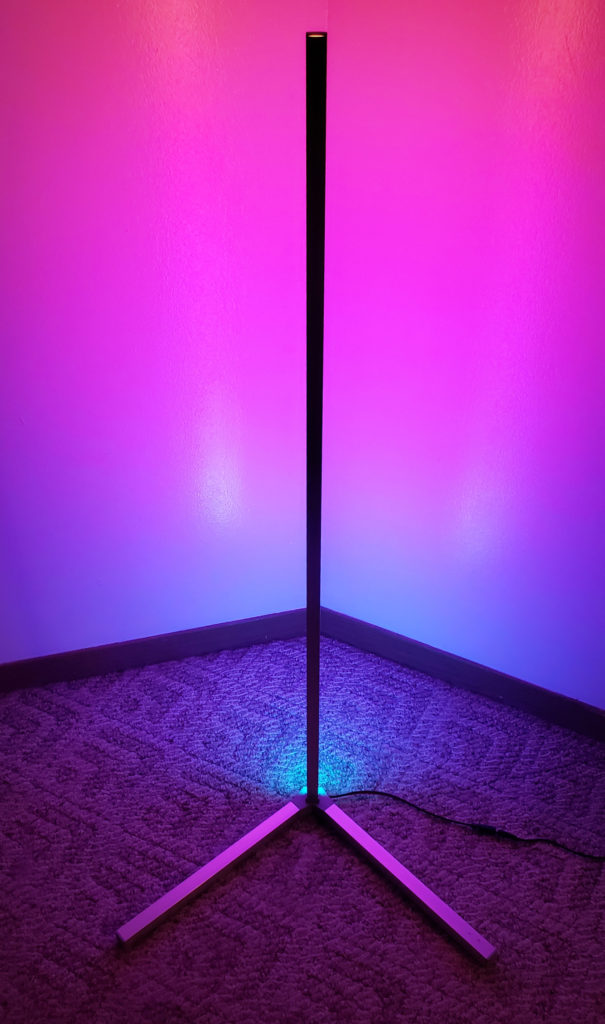Android app based IOT drips monitoring system. (In other words cannula or IV monitoring system)
The CandiStick RGB LED Accent Light
The CandiStick is an RGB LED accent light for your home or office, turn any space into a cool relaxing light scape or even a party! There are several built in lighting effects, as well as a range of customizable colors and effects.
Each CandStick has 60 RGB LEDs, showing a full range of vivid colors and is made of light weight yet elegant aluminum and custom 3D printed modules.

Why is the Sony PlayStation PS3 so hard to emulate ? | MVG
The recent announcement from Sony that the PS5 wont be backward compatible with PS3 games confused many people. Surely the Zen2 architecture is powerful enough to emulate a PS3 when a mid spec PC has been doing it for years. In this episode we take a look at the complexities of emulating a PlayStation 3 and why its unlikely Sony will consider it for the PlayStation 5
Automated Sharpie Support Release Substrate for Desktop 3D Printer Instructions
A basic instructional video on automating a support release substrate added to print supports by utilizing a sharpie permanent marker. This method avoids a true dual extruder, and additional release filament. An ingenious way to release support material, while maintaining a proper connection to the object all while increasing surface quality with by increasing support! An improvement on the methods of Tumblebeer -(https://hackaday.com/2020/05/27/impro…). Big shout out to all that helped me thing through the software logic, and to those who helped me through the Z script portion (Sharktank72@reddit). Final print towards the end of the video.
FOUND! Tony Hawk Pro Skater 1 & 2 (N64) Prototypes
FOUND! Tony Hawk Pro Skater 1 & 2 (N64) Prototypes! We cover the carts, with a focus on the Tony Hawk Pro Skater 2 “Alpha” 4-20-01 build.
Easily Install Minecraft Java Edition On The Raspberry Pi4
In this video, I show you how to easily install the full JAVA version of Minecraft on the Raspberry Pi4 using an awesome open-source application installed known as PIApps by BotSPot! This application also allows you to install Discord, Cura, Zoom, and many other apps with just a click of the mouse on the raspberry pi.
Goldeneye 007 on the N64 contained the original Rare Replay ? | MVG
On August 1997, Rare released Goldeneye 007 – the first person shooter that is considered one of the best games ever made. In 2012 it was discovered that 10 hidden games were built into Goldeneye. In this episode we take a closer look at this.
How to Make an Interactive Coffee Table: Reactive LED Coffee Table | Arduino Projects
In this video we describe how to make an interactive coffee table using ws2812b leds and an Arduino. Not only does this coffee table have WS2812b leds and can display cool light animations, but it doubles as an interactive coffee table that lights up when things get up close to it. It functions by creating a cluster of nodes made up of 2 IR emitters, 2 photodiodes, and 4 ws2812b leds. Upon program startup, each node reads a base value of the ambient light. When an object gets close to the node, Infrared (IR) light is bounced off the object and into the photodiodes. This causes the diodes to change voltage and thus lets the arduino know if something is close. The IR emitters and photodiodes basically act like a proximity sensor and anytime something gets close to it, the sensor will go off. Please comment with any questions you have and like the video if you enjoyed it. If you want to see more content like this one, consider subscribing.
Oculus Quest 2 Users are Getting BANNED and Headsets Bricked
Hello and Welcome to TUESDAY NEWSDAY! Your number one resource for the entire weeks worth of VR news. Today I have have something kind of serious to talk about, all of these happenings with Oculus users getting their accounts banned recently even if they have a legit account through Facebook. I am not sure how widespread the issue is, or if it’s effecting dozens, or hundreds, or thousands of users, but the mass reports are available all over the internet to see. Here’s at least some advice on how to NOT get banned.
ZELDA DUNGEONS! Linear vs Non-Linear
Which is better?!
